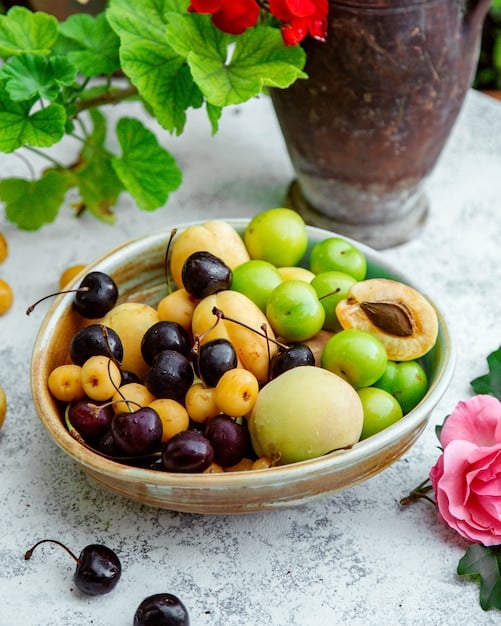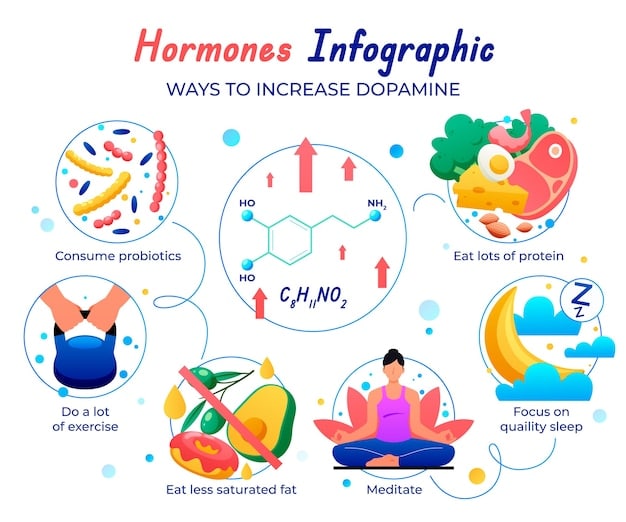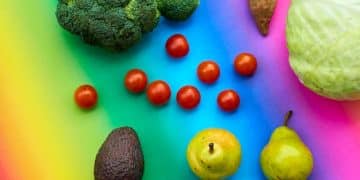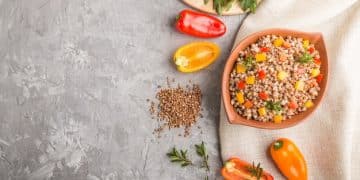The Truth About Sugar: How Much Is Too Much for Your Health?

The Truth About Sugar: How Much Is Too Much for Optimal Health? Understanding the optimal amount of sugar intake is crucial for maintaining overall well-being, preventing chronic diseases, and promoting a balanced lifestyle.
Unraveling the truth about sugar: how much is too much for optimal health? is essential in today’s world where sugary treats and processed foods are abundant, making it crucial to understand the impact of sugar on our well-being and how to strike a healthy balance.
Understanding the Basics of Sugar
Sugar is a ubiquitous component of our diet, present in various forms and sources. Understanding the types and how our bodies process sugar is the first step towards making informed dietary choices.
Types of Sugars
Sugars come in various forms, each with unique properties and impacts on the body.
- Glucose: The primary sugar our bodies use for energy, derived from carbohydrates.
- Fructose: Found naturally in fruits and honey, it’s sweeter than glucose.
- Sucrose: Common table sugar, composed of glucose and fructose.
- Lactose: Found in milk and dairy products, it is a combination of glucose and galactose.
How the Body Processes Sugar
When we consume sugar, our bodies break it down into glucose to be used for energy. Excess glucose is stored as glycogen in the liver and muscles, and when these stores are full, the remaining glucose is converted into fat.

Understanding this process is critical for managing weight and preventing metabolic disorders.
In conclusion, understanding the types of sugars and their metabolic pathways is fundamental to making informed decisions about your sugar intake and its overall health implications.
The Dangers of Excessive Sugar Consumption
Consuming too much sugar can lead to a variety of health problems, ranging from weight gain to chronic diseases. It’s important to recognize these dangers to make informed dietary choices.
Weight Gain and Obesity
Excess sugar intake can contribute to weight gain and obesity due to the high caloric content and its impact on insulin levels, which can promote fat storage.
Increased Risk of Type 2 Diabetes
High sugar intake is closely linked to an increased risk of developing type 2 diabetes. Constant exposure to high sugar levels can lead to insulin resistance, where the body’s cells become less responsive to insulin.
- Insulin Resistance: Cells become less responsive to insulin, requiring the pancreas to produce more.
- Pancreatic Stress: Over time, the pancreas may struggle to keep up with the demand, leading to elevated blood sugar levels.
- Increased Risk Factors: These conditions further increase the risk of developing type 2 diabetes.
Heart Disease
Studies have shown that high sugar consumption can increase the risk of heart disease by raising blood pressure, increasing “bad” LDL cholesterol levels, and promoting inflammation.
By being aware of these health risks, individuals can take proactive steps to monitor and reduce their sugar consumption, promoting overall well-being.
Recommended Daily Sugar Intake
Knowing the recommended daily sugar intake can help you make informed decisions about your diet and maintain a healthy lifestyle. Let’s explore the guidelines from reputable health organizations.
Guidelines from Health Organizations
Organizations like the American Heart Association (AHA) and the World Health Organization (WHO) provide guidelines on the recommended daily sugar intake.
- American Heart Association (AHA): Recommends no more than 6 teaspoons (25 grams) of added sugar per day for women and 9 teaspoons (36 grams) per day for men.
- World Health Organization (WHO): Suggests reducing the intake of free sugars to less than 10% of total energy intake, and further reducing it to below 5% for additional health benefits.
- Dietary Guidelines for Americans: Advises limiting added sugars to less than 10% of daily calories.
Understanding Added vs. Natural Sugars
It’s important to distinguish between added sugars and natural sugars. Added sugars are those that are added to foods and beverages during processing or preparation, while natural sugars are found naturally in fruits, vegetables, and dairy products.

Focus on naturally occurring sugars found in whole foods, such as fruits, and minimize added sugars found in processed foods and beverages.
Understanding and adhering to recommended daily sugar intake guidelines is crucial for maintaining optimal health and preventing chronic diseases.
Identifying Hidden Sugars in Common Foods
Many processed foods contain hidden sugars that can significantly contribute to your daily sugar intake. Learning to identify these hidden sugars is essential for making healthier choices.
Reading Food Labels
One of the most effective ways to identify hidden sugars is by carefully reading food labels. Pay attention to the “Added Sugars” section on the Nutrition Facts label.
Common Sources of Hidden Sugars
Hidden sugars can be found in a variety of common foods. Recognizing these sources can help you make more informed choices.
- Breakfast Cereals: Many breakfast cereals are loaded with added sugars, often listed as sucrose, fructose, or high fructose corn syrup.
- Sauces and Dressings: Ketchup, salad dressings, and barbecue sauce can contain significant amounts of added sugars.
- Yogurt: Flavored yogurts often have added sugars to enhance the taste. Opt for plain yogurt and add your own fruit for sweetness.
- Bread: Some breads, especially white bread and sweetened varieties, can contain added sugars.
Alternative Names for Sugar
Food manufacturers often use alternative names for sugar on food labels. Being aware of these names can help you identify hidden sugars more effectively.
By learning to identify hidden sugars and reading food labels carefully, you can make healthier choices and reduce your overall sugar intake.
Strategies for Reducing Sugar Intake
Reducing your sugar intake involves making mindful choices and adopting strategies that help you cut back on added sugars. Here are some effective ways to lower your sugar consumption.
Substituting Sugary Drinks with Healthier Options
Sugary drinks are a major source of added sugars in many diets. Replacing these with healthier alternatives is a simple yet effective strategy.
Cooking and Baking at Home
Preparing meals and snacks at home allows you to control the amount of sugar added to your food. When baking, consider using natural sweeteners like stevia, monk fruit, or small amounts of honey or maple syrup.
Mindful Snacking
Choose snacks that are low in added sugars and high in nutrients. Opt for fresh fruits, vegetables with hummus, nuts, or plain yogurt with berries.
Finding simple ways to reduce sugar consumption can lead to significant health improvements.
The Role of Natural Sweeteners
Natural sweeteners can be a healthier alternative to refined sugars, but it’s important to understand their benefits and drawbacks.
Overview of Natural Sweeteners
Natural sweeteners are derived from natural sources and often have a lower glycemic index compared to refined sugars. Some popular options include:
- Stevia: A zero-calorie sweetener derived from the stevia plant.
- Monk Fruit: Another zero-calorie sweetener derived from the monk fruit.
- Honey: A natural sweetener with antioxidant properties, but it is still high in calories.
- Maple Syrup: A natural sweetener with a lower glycemic index than refined sugar, containing some minerals.
Benefits and Drawbacks
When choosing natural sweeteners, consider their impact on blood sugar levels, caloric content, and overall health.
While natural sweeteners can be a better option than refined sugars, they should still be used in moderation as part of a balanced diet.
| Key Point | Brief Description |
|---|---|
| 🍏 Natural vs. Added Sugars | Prioritize natural sugars from fruits over added sugars in processed foods. |
| 🥤 Reduce Sugary Drinks | Replace sodas and juices with water or unsweetened beverages. |
| 🧐 Read Food Labels | Check for hidden sugars listed as syrups, dextrose, or fructose. |
| 🏠 Cook at Home | Control sugar levels by preparing meals and snacks yourself. |
Frequently Asked Questions
▼
The American Heart Association recommends no more than 6 teaspoons (25 grams) of added sugar per day for women and 9 teaspoons (36 grams) per day for men.
▼
While natural sugars come with beneficial nutrients, they still affect blood sugar levels. Added sugars, however, provide empty calories and should be limited.
▼
Read food labels carefully and look for alternative names for sugar such as high fructose corn syrup, sucrose, glucose, dextrose, and maltose in the ingredients list.
▼
Healthier alternatives include water, unsweetened tea, sparkling water with fruit slices, and homemade smoothies with natural sweeteners like stevia or monk fruit.
▼
Yes, reducing sugar intake can lead to weight loss, improved blood sugar levels, reduced risk of heart disease, and increased overall energy levels and well-being.
Conclusion
Understanding the truth about sugar: how much is too much for optimal health? is crucial for maintaining a balanced and healthy lifestyle. By being mindful of sugar intake, making informed dietary choices, and adopting healthier habits, you can reduce the risks associated with excessive sugar consumption and improve your overall well-being.





